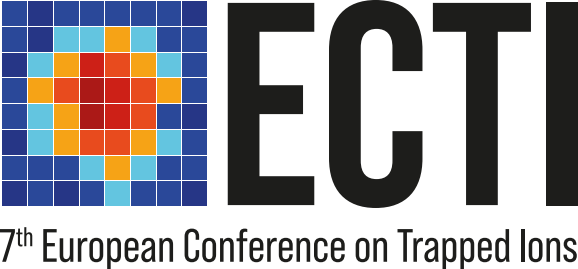Speaker
Description
Highly charged ions (HCI) have long been proposed for the application in optical clocks due to their extreme atomic properties. This allows for tests of fundamental physics and promises a systematic uncertainty that can compete with the state-of-the-art [1]. However, their application as frequency references has long been impeded by the megakelvin temperatures at which HCI are typically produced and stored. In our work, this is overcome by extracting HCI from a plasma and transferring them to a cryogenic linear Paul trap. There, a single HCI is sympathetically cooled using singly-charged Be+ ions, enabling quantum logic spectroscopy with Hz-level resolution [2] which paved the way to optical clock operation. The evaluation of the experimental setup yielded a systematic uncertainty of $2\times10^{-17}$, comparable to many other optical clocks. As a demonstration, the frequency of the electric dipole-forbidden transition in Ar$^{13+}$ was compared to the well-known octupole transition in $^{171}$Yb$^+$. The derived absolute frequency and isotope shift ($^{36}$Ar$^{13+}$ vs $^{40}$Ar$^{13+}$) are compared to the best previous result, providing an improvement by eight and nine orders of magnitude, respectively. For the first time, this has enabled to resolve the QED nuclear recoil in a many-electron system [3]. The applied techniques are universal and can easily be transferred to other HCI species. Recently, we demonstrated this by performing measurements of Ca$^{14+}$, where we investigated the isotope shift of the transition frequency and the excited-state $g$-factor. These results will be used to test fundamental physics and search for new physics [4, 5].
[1] M. G. Kozlov, et al., Rev. Mod. Phys. 90, 045005 (2018)
[2] P. Micke, et al., Nature 578, 60–65 (2020)
[3] S. A. King, L. J. Spieß, et al., Nature 611, 43-47 (2022)
[4] N.-H. Rehbehn, et al., Phys. Rev. A 103, L040801 (2021)
[5] J. C. Berengut, et al., Phys. Rev. Lett. 120, 091801 (2018)

